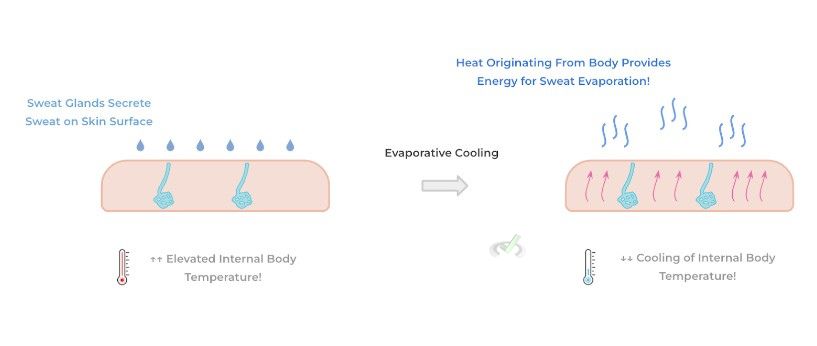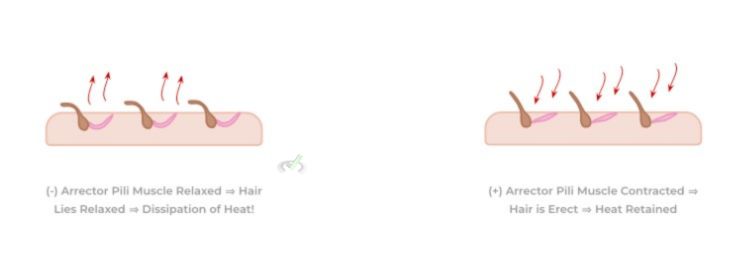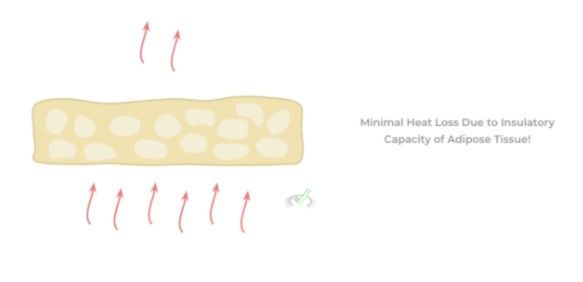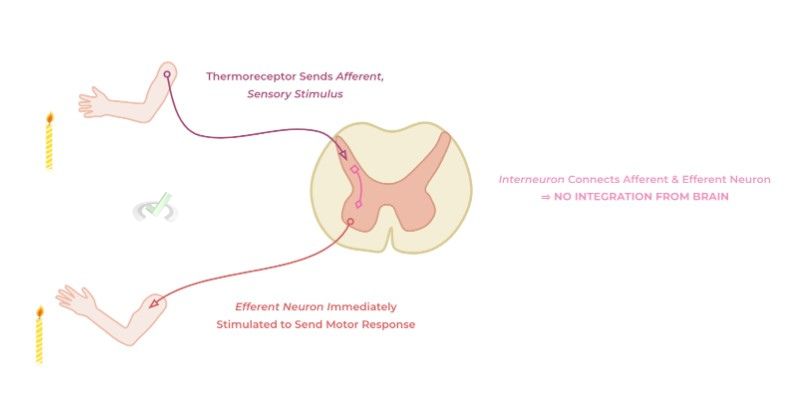I. What are the Functions of the Integumentary System?
Though it’s the largest organ of the human body, sometimes we may take the function of skin as a protective organ for granted. As I’m writing this, I’m definitely guilty of brushing my skin off as a protective barrier and may be a little more concerned about it having that glass skin texture.
In this article, we’ll go into the various important roles of the skin (and the integumentary system as a whole) in regards to maintaining our body’s physiological homeostasis. You might be surprised to see there’s a lot more than meets the eye when it comes to how this system functions!
II. Protective and Homeostatic Function of the Integumentary System
While we usually associate the skin as being a protective organ as it conceals our internal organs from the external environment, this system also has function in thermoregulation as well as sensation of our external environment!
A. Protective Function
As we’ve already seen, the main function of the skin is to serve as a barrier between our internal organs and the outside world — as such, the skin can be considered a part of the innate immune system as it serves as a first line defense against microorganism.
If we look at how the cells of the skin are arranged, we can see how it serves so well as a protective barrier. The keratinocytes of the skin adopt what’s called a “brick and mortar” model where the keratinocytes serve as the “bricks” and the extracellular lipids matrix serves as the mortar!

While the fibrous keratin proteins and melanin are key proteins for skin protection, the extracellular lipid matrix adds a hydrophobic barrier not just functioning for protection but also to prevent water loss which aids in hydration
B. Thermoregulation
Although it may not seem like this on surface view, the skin actually has extensive function in maintaining a homeostatic balance in regards to temperature! There are various mechanisms including sweat glands, vasoconstriction/vasodilation, arrector pili muscle, etc.
I. Sweat Glands
Recall that there are sweat glands spread throughout the skin and are localized in the dermis and that sweat is essentially water with dissolved salt. The body can utilize sweat in order to cool down the body in a process called evaporative cooling just like when you exercise on a hot day!

In this case, the heat which is required to turn the liquid sweat into vapor comes from the increased internal body temperature. When the sweat evaporates into vapor, the internal body temperature is dissipated which allows for the body to cool down!
II. Vasoconstriction/Vasodilation
If you’ve covered our “Functions of the Cardiovascular System” article, this may be a little review for you! Essentially, our skin blood vessels can change diameter which can help conserve or dissipate heat depending on the thermal state of the body!

Under cold conditions, the blood vessels will vasoconstrict in order to prevent the dissipation of heat which allows for heat conservation. Conversely, if your body is hot, the blood vessels will vasodilate in order to maximize the dissipation of heat to cool the body down!
III. Arrector Pili Muscle
Recall also that the hair follicles have associated arrector pili muscle which can actually contract to let the hair stand up — in fact, this is the mechanism behind the phenomenon “goosebumps”!

Under cold conditions, the arrector pili muscle contract which causes the hair proteins to become erect! This erect posture of the hair protein allows it to trap and conserve heat to warm the body — just think about any time you walked through the frozen grocery section.
Conversely, hot temperatures will cause the arrector pili muscle to remain relaxed which results in a relaxed, non-erect posture for hair! As such, less heat is trapped and retained and can be dissipated in order to cool the body down.
IV. Insulation via the Hypodermis/Subcutaneous Layer
Finally, also recall that the hypodermis/subcutaneous layer is the bottom most layer of the skin with abundant adipose tissue (i.e. fat). This fat tissue not only allows for the cushioning of our internal organs but also aids in retaining heat due to its strong insulation capacity.

C. External Sensation
Finally, because it’s our only physical connection to the outside world, our skin allows us to comprehend external stimuli via the various receptors and nerves embedded prominently in the dermis which can send afferent, sensory signals to the brain which can then be comprehended!
There are various different types of receptors which can respond to different sensual stimuli such as pain, light vibration, temperature, etc.
III. Bridge/Overlap
An important application of the sensation function of the skin is through various established reflex arcs within the body! Let’s look at one example that may be a little familiar, especially if you were a kid who got in trouble for playing with the fire on the stove.
I. Thermoreceptor Activation for Reflex Arc
Maybe as a little kid, you got curious and put your hand a little too close towards the fire and immediately you pulled your arm back — that unconscious effort to pull your hand away from the fire after feeling the warmth came as a result of an activation of a reflex arc!
A reflex arc is activated when a stimulatory afferent signal can result in an immediate efferent motor response without the need for integration and processing via the brain. Take a look at the example below!

In this reflex arc, the hot temperature of the flame is sensed by thermoreceptors on the skin which then relays this afferent, sensory information to an efferent motor neuron within the spinal cord — in this cases, there is technically no direct connection because there’s an interrupting interneuron.
Despite the interneuron, notice how there’s no involvement of the brain for further processing. From here, the efferent neuron can be immediately activated and sends an efferent, motor signal which stimulates the hand to pull away from the heat source!
IV. Wrap Up/Key Terms
Let’s take this time to wrap up & concisely summarize what we covered above in the article!
A. Protective Function
The various skin cells and components act as a physical barrier between our internal and external environment — as such, the skin is considered a primary innate immune defense as it acts as a barrier against invading microorganisms.
The cells of the skin adopt a “brick and mortar” model for their foundation: the keratinocytes rich in keratin and melanin represent the bricks and the extracellular lipid matrix represents the mortar. In addition to the keratin and melanin proteins, the surrounding lipid matrix creates a hydrophobic barrier which similarly aids in protection and prevents water loss.
B. Thermoregulation
There are various mechanisms that the skin employs in order to maintain homeostasis of our internal body temperature!
I. Sweat Glands
These glands which are present throughout the body secrete sweat, which is essentially water with dissolved salt (i.e. sodium chloride).
Sweat can cool down the body via evaporative cooling where it essentially absorbs the heat from the internal body temperature and uses this heat to be converted into vapor, thereby decreasing the body temperature.
II. Vasoconstriction/Vasodilation
In cases of cold temperature, the blood vessels of the skin wil vasoconstrict in order to minimize the surface area available for heat dissipation, resulting in heat retention.
Conversely, when the body is hot, the skin vasculature dilates in order to maximize the surface area for heat dissipation!
III. Arrector Pili Muscle
When the arrector pili muscles contract, they can result in the hair adopting an erect position which makes them trap heat better in cases where the body is experiencing cold temperature.
In contrast, when the body needs to dissipate head because it’s too hot, the arrector pili muscles are relaxed as is the hair protein — thus, the heat dissipates much easier allowing for the body to cool down.
IV. Hypodermis/Subcutaneous Layer
Because the hypodermis contains an abundant amount of fat tissue, it makes it a very good insulator which allows for heat retention!
C. External Sensation
The skin has an abundant amount of sensory receptors which allows us to interact and comprehend the outside world via integration of these sensory stimuli in the brain.
V. Practice
Take a look at these practice questions to see and solidify your understanding!
Sample Practice Question 1
Which of the following physiological responses of an individual after an outdoor workout during the summer time?
I. Contraction of the Arrector Pili Muscle
II. Skin Vasculature Vasodilation
III. Decreased Sweat Gland Activity
A. II only
B. III only
C. I and II
D. II and III
Ans. A
Vasodilation of the skin will allow for an increased surface area for heat dissipation in order to cool the body down.
In addition, in order to decrease the internal body temperature, the arrector pili muscle would be relaxed in order to prevent hair erection and heat retention.
Likewise, there should be an increased activity of the sweat glands in order to increase sweat secretion and promote the process of evaporative cooling.
Sample Practice Question 2
Third degree burns are classified as skin burns which have penetrated and destroyed both the epidermis and dermis. As such, which of the following could be a possible physiological consequence of these types of burns?
I. Loss of Skin Sensation
II. Damage to Skin Vasculature Supply
III. Loss of Skin Insulation Capacity
A. II only
B. III only
C. II and III
D. I and II
Ans. D
The dermis is the layer of the skin which is highly innervated and vascularized. As such, the damage to the nerve innervation would result in a loss of sensation to the skin. Likewise, damage to the skin’s vasculature would occur because the burn extends into the dermis.







 To help you achieve your goal MCAT score, we take turns hosting these
To help you achieve your goal MCAT score, we take turns hosting these 





















 reviews on TrustPilot
reviews on TrustPilot